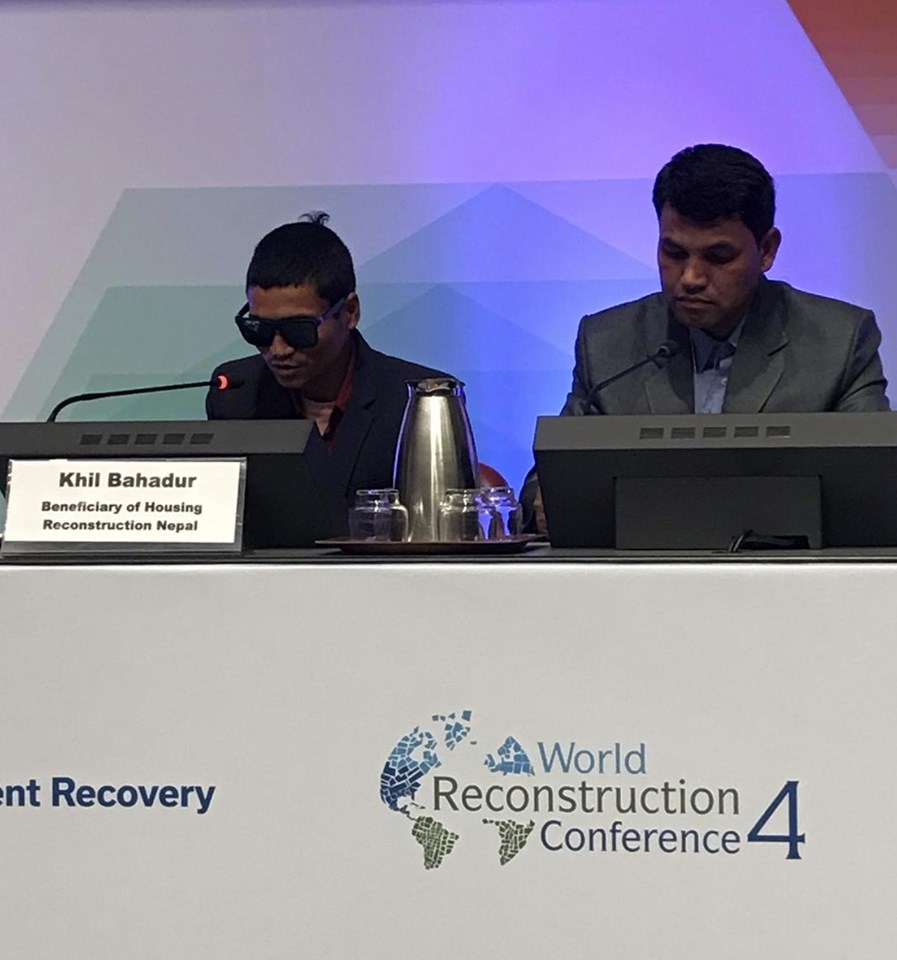One fine morning at home, I was cleaning up the buffalo shed as usual. Suddenly, one of the buffaloes swished its tail and hit me right in the eyes. The impact was very painful. And a month later, I had lost my vision completely.
Life after becoming visually impaired was very difficult and the earthquake of 2015 added to my struggles.
When the earthquake struck, I was at school in Ramuwa VDC of Gulmi district, where I studied. There were also some other visually impaired students at the school. With the shaking of the ground, most of my classmates ran out of the classrooms but those of us who couldn’t see were left inside. It wasn’t until our teachers Pampha Miss and Sashi Miss helped us out into the open playground that we felt safe. Our school buildings did not collapse thankfully. However, I sustained a minor injury to my right elbow during the second aftershock.
I did not have any home or assets in Gulmi. I was working as a helper in a house in Hunga VDC and assisting the family with farming. I had left my house in the year 2001 to find a good job. I was the only one left in my family; I lost my parents and sister at a very early age and I had been raised by my aunt. Prior to coming to Gulmi, I had worked at a tea shop for a few months.
One and a half years after the earthquake, I returned home to Sindhupalchowk in 2016. My teachers Hem Sir and Pampha Miss escorted me here. I started living with my aunt after that.
I think it would be good if we had drills/simulations in all schools and villages to learn what to do when an earthquake occurs. Also, just like I had the assistance of my teachers to help me onto an open space, I feel that it would be good if each visually-impaired person—or anyone with a disability—could be attached to a teacher or a member of the community in cases of emergency. They could help us evacuate and also assist in accessing benefits /assistance given by the government and I/NGOs.
In December 2016, UNDP had organized a community meeting in Irkhu market. One of the neighbors from my village, Sabitri, had also attended that meeting. When she came to know that UNDP was looking to support poor, vulnerable, single, elderly, orphaned or people with disabilities from the community in building earthquake-resistant model houses, she had referred my name. Later, I came to know that I had been selected as a beneficiary.
My house is built with GI wire frame technology which is earthquake resistant. It is cool inside during summer and warm during winters. For a visually-impaired person like me, the house is accessible and disabled-friendly.
The structure was built with the help of local masons from the village, who also received on-site training. It took almost 45 days to build the house. There were a total of 12 people, including masons and carpenters, five of whom were women. They worked voluntarily for a day. The people from my community also helped with the transport of building materials, including stone and wood, and in providing lunch for the workers. I want to thank all of them. I would never have been able to build a house like this without their support.
For post disaster-recovery for people with disabilities, I would advise international agencies to work on solutions that best meet the needs of such people. They could provide support to build a disabled-friendly house, enhance livelihood options or support the education of children. Clean drinking water and sanitation are also important aspects to consider.
Visually-challenged Khil Bahadur from Sindhupalchowk is living in much safer conditions after the earthquake destroyed his home. A model structure provided by UNDP’s Comprehensive Disaster Risk Management Programme as part of the Resilient Communities Through Building Back Better project funded by the Humanitarian Aid department of the European Commission.

 Locations
Locations
